List Of Food That Contains Iron
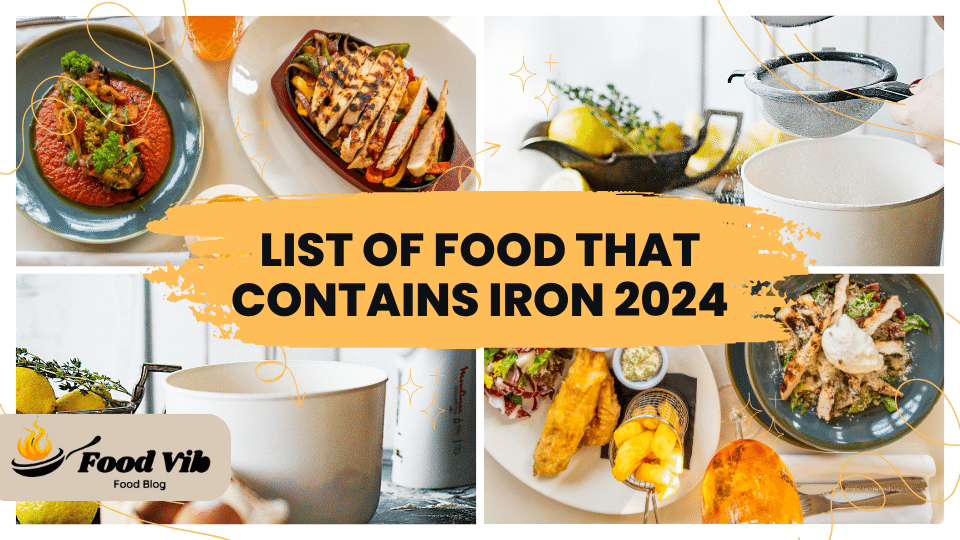
Iron is an important mineral required for several body activities, including oxygen delivery, energy synthesis, and cell development. Incorporating iron-rich foods into your diet is vital for sustaining overall health.
Fortunately, there’s a varied selection of alternatives to pick from, including both animal and plant sources. Whether you favor meats, beans, nuts, or leafy greens, there are lots of delectable options to satisfy your daily iron needs.

List Of Food That Contains Iron
Iron is a necessary mineral that is important for many body processes, such as blood oxygen transfer and energy metabolism support. Iron deficiency may cause weakness, exhaustion, and problems with thinking. Consuming meals high in iron is essential to preserving good health. We’ll look at a wide number of foods that are great providers of iron in this thorough guide.
Iron’s Significance in Diet
Let’s start by discussing the benefits of iron for our bodies before going over the list of foods high in minerals. Hemoglobin, a protein found in red blood cells that transports oxygen from the lungs to the body’s tissues, is mostly composed of iron. Iron deficiency anemia is a disorder when the body is unable to create enough healthy red blood cells that deliver oxygen.
In addition, iron is essential for immune system support, good skin, hair, and nails, and cognitive development—particularly in young children and babies.
List of Iron-Rich Foods
- Red Meat: Heme iron, which is more readily absorbed by the body than non-heme iron found in plant-based diets, is abundant in beef, lamb, and hog.
- Poultry: Heme iron may be found in abundance in chicken and turkey. Eating lean poultry chops might increase your intake of iron.
- Seafood: Iron is contained in shellfish like mussels, clams, and oysters. Large levels of this vital mineral are also found in fish including tuna, salmon, and sardines.
- Liver: The liver is one of the most iron-rich organ meats. Including the liver in your diet might raise your iron levels significantly.
- Beans and Lentils: Excellent plant-based sources of iron include lentils, black beans, kidney beans, and chickpeas. They provide a nutrient-dense complement to vegetarian and vegan diets since they are also strong in fiber and protein.
- Tofu and Tempeh: Rich in protein and iron, soy products like tofu and tempeh are a great source of nutrients. These are adaptable components that work well in a variety of recipes.
- Leafy Greens and Spinach: Rich in iron, dark leafy vegetables include Swiss chard, collard greens, spinach, and kale. They also provide a variety of minerals, vitamins, and antioxidants.
- Quinoa: This gluten-free grain is a complete protein that has all nine necessary amino acids and is an excellent source of iron.
- Nuts and Seeds: Some great sources of iron are cashews, sesame seeds, pumpkin seeds, and almonds. They are tasty and healthful as toppings for salads and yogurt, or as quick snacks.
- Fortified Foods: A lot of bread, pasta, and morning cereals are enriched with iron and other minerals. To be sure you’re selecting items containing additional iron, read the nutrition labels.
Strategies to Improve Iron Absorption
Although eating meals high in iron is vital, there are methods to improve your body’s ability to absorb iron:
- Combine Foods High in Iron with Vitamin C: Eating foods high in vitamin C, such as tomatoes, bell peppers, citrus fruits, and strawberries, may improve the absorption of non-heme iron from plant-based sources.
- Avoid Having Tea or Coffee with Meals: Tea and coffee contain tannins, which might prevent the absorption of iron. It’s advisable to stay away from these drinks while eating, particularly if you’re attempting to consume more iron.
- Cook in Cast Iron Cookware: Using cast iron cookware to cook acidic dishes like chili or tomato sauce may raise the iron content of such meals.
- Space Out Iron Supplements: To improve absorption, it’s advised that if you take iron supplements, you spread them out throughout the day as opposed to taking them all at once.
It is essential to include a range of foods high in iron in your diet to avoid iron deficiency anemia and preserve good health. There are several choices available to fulfill your daily iron requirements, regardless of your preference for plant- or animal-based sources.
Which Foods Are Best for Boosting Iron in Your Body?
Iron is a crucial mineral necessary for several physical activities, including the delivery of oxygen throughout the body. An appropriate intake of iron is vital for general health and well-being. However, many people, particularly women, and vegetarians, may fail to satisfy their daily iron needs. In this post, we will investigate the greatest foods for raising iron levels in your body and present practical advice for adding them to your diet.
Understanding Iron Deficiency
Iron insufficiency is a widespread dietary concern globally, affecting persons of all ages. It happens when your body lacks a sufficient quantity of iron to make hemoglobin, the protein responsible for delivering oxygen in the blood. Common reasons for iron shortage include low nutritional intake, poor absorption of iron from meals, blood loss due to menstruation or gastrointestinal disorders, and increased need for iron during pregnancy or growth spurts.
Iron deficiency may lead to different symptoms, including tiredness, weakness, pale complexion, shortness of breath, and reduced cognitive function. If left untreated, severe iron shortage may proceed to iron deficiency anemia, a disorder defined by low amounts of hemoglobin in the blood. Iron deficiency anemia may have major implications, such as reduced immunological function, delayed growth and development in children, and increased risk of problems during pregnancy.
The Role of Diet in Iron Absorption
Diet has a key role in iron absorption. While certain meals are rich in iron, not all of the iron they contain is easily absorbed by the body. Factors such as the kind of iron contained in the meal, the availability of enhancers or inhibitors of iron absorption, and individual variances in iron metabolism might alter the body’s capacity to absorb iron from dietary sources.
To boost iron absorption, it is vital to take iron-rich meals together with enhancers such as vitamin C. Vitamin C helps convert non-heme iron, the kind of iron found in plant-based meals, into a form that is more readily absorbed by the body. Foods rich in vitamin C include citrus fruits, strawberries, bell peppers, and broccoli. On the other hand, some chemicals, such as tannins in tea and coffee, calcium in dairy products, and phytates in whole grains and legumes, might hinder iron absorption and should be ingested in moderation, particularly during meals.
Top Iron-Rich Foods
Plant-Based Sources of Iron
Plant-based sources of iron include: – Spinach: Rich in non-heme iron and vitamin C.
- Legumes: Beans, lentils, and chickpeas are rich providers of iron and protein.
- Quinoa: A healthy grain that includes both iron and protein.
- Tofu: A versatile soy-based food that contains iron and other critical elements.
- Nuts and Seeds: Almonds, pumpkin seeds, and hemp seeds are filled in iron and healthful lipids.
Animal-Based Sources of Iron
Animal-based sources of iron include: – Lean Meats: Beef, pig, and poultry are high in heme iron, which is more readily absorbed by the body.
- Seafood: Oysters, clams, and sardines are great providers of heme iron and omega-3 fatty acids.
- Eggs: A healthy source of heme iron, protein, and other necessary elements.
- Organ Meats: The liver and kidney are especially abundant in iron and other vitamins and minerals.
Recipes to Boost Iron Intake
Incorporating iron-rich foods into your diet may be tasty and simple. Here are some recipes to help you raise your iron intake:
- Spinach and Chickpea Salad: Combine fresh spinach leaves, cooked chickpeas, cherry tomatoes, and chopped avocado. Dress with a vinaigrette prepared from olive oil, lemon juice, and chopped garlic.
- Beef Stir-Fry with Broccoli: Stir-fry thinly sliced beef with broccoli florets, bell peppers, and onions in a sesame oil-based sauce. Serve over brown rice or quinoa.
- Lentil Soup: Simmer lentils with sliced carrots, celery, onions, and garlic in vegetable stock until soft. Season with cumin, coriander, and smoky paprika for additional flavor.
- Grilled Salmon with Asparagus: Marinate salmon fillets in a combination of soy sauce, honey, ginger, and garlic. Grill until cooked through and serve with grilled asparagus spears.
- Tofu Stir-Fry: Sauté cubed tofu with bell peppers, snap peas, and mushrooms in a teriyaki sauce. Serve over rice or noodles for a full supper.
Supplementation and Alternative Sources
While a balanced diet should give an acceptable quantity of iron for most people, certain people may need supplementation to achieve their nutritional requirements. Iron supplements are available over-the-counter and may be used orally to prevent or treat iron deficiency. However, it is vital to contact a healthcare practitioner before commencing any supplementation routine, since excessive iron consumption may have detrimental consequences on health.
For those with dietary limitations or preferences, there are alternate sources of iron available. Fortified foods such as morning cereals, bread, and plant-based meat replacements are typically supplemented with iron to increase their nutritional worth. Additionally, cooking on cast-iron cookware may boost the iron content of meals, particularly in acidic recipes like tomato sauce or chili.
Incorporating Iron-Rich Foods Into Your Diet
Incorporating iron-rich foods into your diet is vital for maintaining good health and avoiding iron shortage. Here are some practical strategies for adding additional iron to your meals:
- Include a variety of iron-rich foods: Incorporate a broad range of iron-rich foods into your diet to ensure you’re receiving enough of this crucial mineral.
- Pair iron-rich meals with enhancers: Combine iron-rich plant-based foods with enhancers like vitamin C-rich fruits and vegetables to increase iron absorption.
- Limit inhibitors of iron absorption: Be careful of things that might hinder iron absorption, such as tea, coffee, calcium-rich foods, and high-fiber foods, and take them in moderation, particularly during meals.
- Cook in cast-iron cookware: Use a cast-iron pan for cooking acidic meals like tomato sauce or chili to enhance the iron
Must Read: Food That Makes People Sick Will Often
10 Iron-Rich Foods You Need to Add to Your Diet
Welcome to our complete guide on iron-rich foods! Iron is an essential mineral that plays a significant part in several body activities, including delivering oxygen in the blood, supporting metabolism, and assisting in the creation of energy. Incorporating iron-rich foods into your diet is vital for sustaining good health and well-being. In this post, we’ll look into the top 10 iron-rich foods that you need to include in your diet for enhanced overall health.
1. Spinach
Spinach is a powerhouse of nutrients and an excellent source of iron. Packed with vitamins, minerals, and antioxidants, spinach is a versatile leafy green that may be consumed in salads, smoothies, stir-fries, or as a side dish. Incorporating spinach into your meals is a wonderful method to enhance your iron consumption and support optimum health.
2. Lentils
Lentils are a mainstay in many cuisines throughout the globe and are recognized for their high iron content. These legumes are not only high in iron but also offer a considerable supply of protein, fiber, and other critical elements. Whether used in soups, stews, salads, or as a meat alternative, lentils are a healthy complement to any diet.
3. Quinoa
Quinoa is a nutrient-dense grain that is naturally gluten-free and high in iron. In addition to being a good source of iron, quinoa also delivers a complete protein, making it a popular option for vegetarians and vegans. Incorporating quinoa into your dishes offers a tasty and healthy boost to your diet.
4. Red Meat
Red meat, such as beef and lamb, is well-known for its high iron concentration. These meats are high in heme iron, which is readily absorbed by the body and crucial for maintaining healthy blood levels. While red meat should be taken in moderation, integrating lean cuts into your diet may offer a major amount of iron and other critical elements.
5. Shellfish
Shellfish, especially oysters, clams, and mussels, are good providers of iron and other vital elements. These seafood selections are not only tasty but also rich in vitamins and minerals that enhance overall wellness. Adding shellfish to your diet may help enhance your iron intake and promote optimum health.
6. Pumpkin Seeds
Pumpkin seeds are a healthful snack and a good source of iron. These seeds are also rich in other critical elements, including magnesium, zinc, and omega-3 fatty acids. Incorporating pumpkin seeds into your diet is a simple and tasty method to enhance your iron intake and promote overall health.
7. Tofu
Tofu, a popular plant-based protein, is a good source of iron for vegetarians and vegans. Made from soybeans, tofu is not only rich in iron but also offers a major supply of protein, calcium, and other critical elements. Adding tofu to your meals is a diverse and healthful method to enhance your iron intake.
8. Dark Chocolate
Dark chocolate is not only a delightful treat but also an unexpected source of iron. Opt for dark chocolate with a high cocoa content to optimize its iron content while enjoying its rich taste and antioxidant qualities. Incorporating dark chocolate into your diet in moderation may offer a delightful and healthy source of iron.
9. Fortified Cereals
Many morning cereals are fortified with iron and other key minerals, making them a handy and accessible supply of this crucial mineral. Look for cereals that are enriched with iron and other vitamins and minerals to start your day off correctly and promote optimum health.
10. Beans
Beans, notably kidney beans, black beans, and chickpeas, are good providers of iron and other critical elements. These beans are flexible and may be included in several meals, including soups, salads, and casseroles. Adding beans to your diet is a tasty and healthy way to enhance your iron intake and promote overall health.
Conclusion
Incorporating iron-rich foods into your diet is vital for sustaining good health and well-being. Whether you’re a vegetarian, vegan, or omnivore, there are plenty of tasty and healthy alternatives to pick from. From leafy greens and legumes to lean meats and seafood, including iron-rich foods your meals may help guarantee that you’re receiving enough of this crucial mineral to maintain good blood levels and general health.
Remember to incorporate a range of iron-rich foods in your diet to ensure that you’re reaching your nutritional requirements. By including these 10 iron-rich foods in your meals, you may enhance your iron intake and promote optimum health and well-being.
Must Read: 25 Popular Mexican Food Easy Recipes for Beginner
FAQS (Frequently Asked Questions)
Can iron supplements cause side effects?
Iron supplements may induce adverse effects such as constipation, nausea, and stomach pain in some persons. It's crucial to follow the suggested dose and check with a healthcare practitioner before beginning any supplements routine.
Are there any foods that inhibit iron absorption?
Yes, some foods and substances may limit iron absorption, including phytates present in whole grains and legumes, and tannins found in tea and coffee. Consuming these items in moderation and mixing them with boosters of iron absorption may help reduce their effects.
How can I tell if I have iron deficiency?
Common signs of iron deficiency include weariness, weakness, pale complexion, shortness of breath, and chilly hands and feet. However, the only method to prove iron deficiency is via blood tests given by a healthcare practitioner.
Can iron deficiency be prevented through diet alone?
In many situations, iron deficiency may be avoided or controlled with dietary modifications alone. By integrating iron-rich foods into your diet and paying attention to elements that impact iron absorption, you may support your body's iron requirements naturally.
Are there any risks associated with consuming too much iron?
Yes, taking high quantities of iron may lead to iron overload, which may produce symptoms such as stomach discomfort, joint pain, exhaustion, and organ damage. It's vital to prevent excessive iron consumption and check with a healthcare expert if you have concerns about your iron levels.
what food is highest in iron?
Foods that are highest in iron include:
- Organ meats: The liver, particularly cow liver, is very abundant in iron.
- Shellfish: Clams, mussels, and oysters are good sources of iron.
- Red meat: Beef, lamb, and venison are rich sources of heme iron, which is more readily absorbed by the body.
- Poultry: Chicken and turkey, particularly the dark flesh, contain large levels of iron.
- Fish: Tuna, salmon, and sardines are rich sources of iron.
- Beans and legumes: Lentils, chickpeas, soybeans, and kidney beans are rich in iron, particularly for vegetarian diets.
- Dark leafy greens: Spinach, kale, and Swiss chard are good plant-based sources of iron.
- Fortified foods: Some morning cereals, bread, and pasta are fortified with iron, making them suitable sources as well.
Consuming meals high in vitamin C with iron-rich foods may boost iron absorption. Conversely, calcium-rich meals and beverages like dairy products might limit iron absorption when taken together.
What is iron-rich fruits and vegetables?
Fruits and vegetables that are reasonably rich in iron include:
- Spinach: This lush green vegetable is one of the greatest plant-based suppliers of iron.
- Swiss chard: Similar to spinach, Swiss chard is similarly high in iron.
- Lentils: These legumes are not only abundant in protein but also contain a considerable quantity of iron.
- Kidney beans: Another legume that delivers a considerable quantity of iron.
- Chickpeas: Also known as garbanzo beans, chickpeas are an excellent source of iron.
- Apricots: Dried apricots are especially abundant in iron compared to other fruits.
- Prunes: Also known as dried plums, prunes are another fruit high in iron.
- Raisins: These dried grapes are a quick snack and contain considerable levels of iron.
While fruits and vegetables are often not as rich in iron as animal-based sources, they may nevertheless add to total iron consumption, particularly in vegetarian and vegan diets. Consuming these iron-rich fruits and vegetables with vitamin C-rich meals may boost iron absorption.
Which iron-rich foods for females?
Certainly! Here are some iron-rich meals that are excellent for females:
- Lean Red Meat: Beef, lamb, and pig are great sources of heme iron, which is more readily absorbed by the body compared to non-heme iron.
- Poultry: Chicken and turkey are also rich suppliers of heme iron.
- Fish: Certain varieties of fish such as tuna, salmon, and sardines are high in iron.
- Shellfish: Shrimp, clams, and mussels are especially rich in iron concentration.
- Legumes: Beans, lentils, and chickpeas are high in non-heme iron, which is beneficial for vegetarian or vegan diets.
- Tofu: This soy-based product is not only an excellent source of iron but also a flexible element in numerous meals.
- Quinoa: A gluten-free grain that is not only high in iron but also has a considerable quantity of protein.
- Spinach: Among leafy greens, spinach is recognized for its high iron concentration. Other alternatives include kale, collard greens, and Swiss chard.
- Fortified Cereals: Many morning cereals are fortified with iron and other nutrients, making them a handy alternative.
- Seeds and Nuts: Pumpkin seeds, sesame seeds, and almonds are examples of nuts and seeds that are rich in iron.
Incorporating these iron-rich foods into your diet will help ensure that females satisfy their daily iron requirements, particularly during menstruation or pregnancy when iron demands may rise. However, it's crucial to remember that vitamin C may promote iron absorption, so mixing iron-rich meals with sources of vitamin C such as citrus fruits, berries, or bell peppers will further improve iron absorption.
Is milk rich in iron?
No, milk is not considered a rich source of iron. While milk is an excellent source of calcium, vitamin D, and protein, it is often low in iron concentration. Therefore, if you want to enhance your iron consumption, you should concentrate on other foods such as lean meats, poultry, fish, legumes, tofu, leafy greens, fortified cereals, seeds, and nuts. Additionally, mixing iron-rich meals with sources of vitamin C may boost iron absorption, although milk alone does not substantially add to iron consumption.

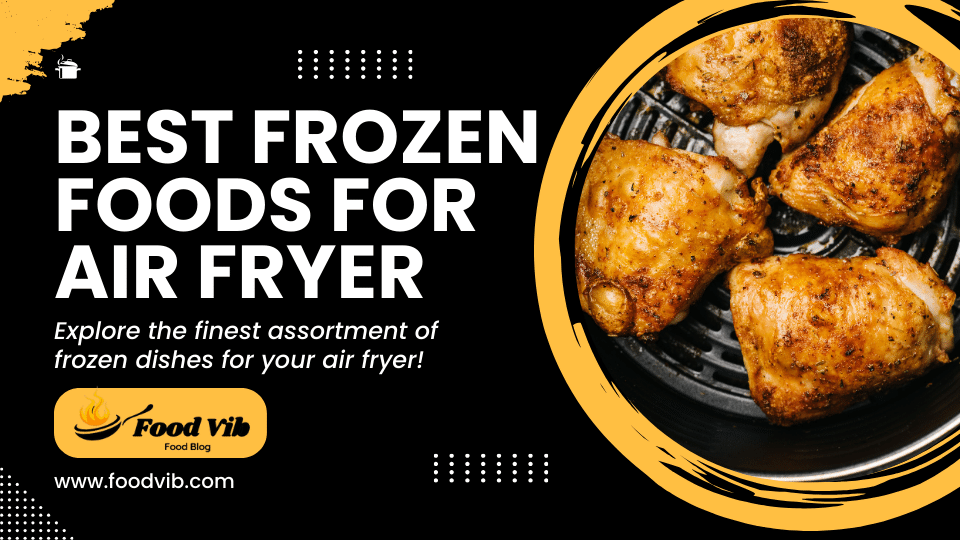
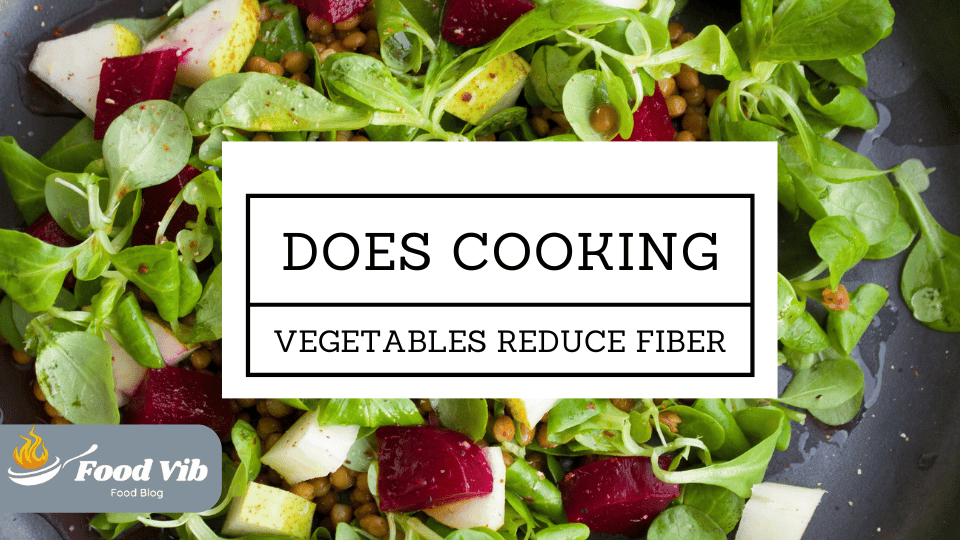
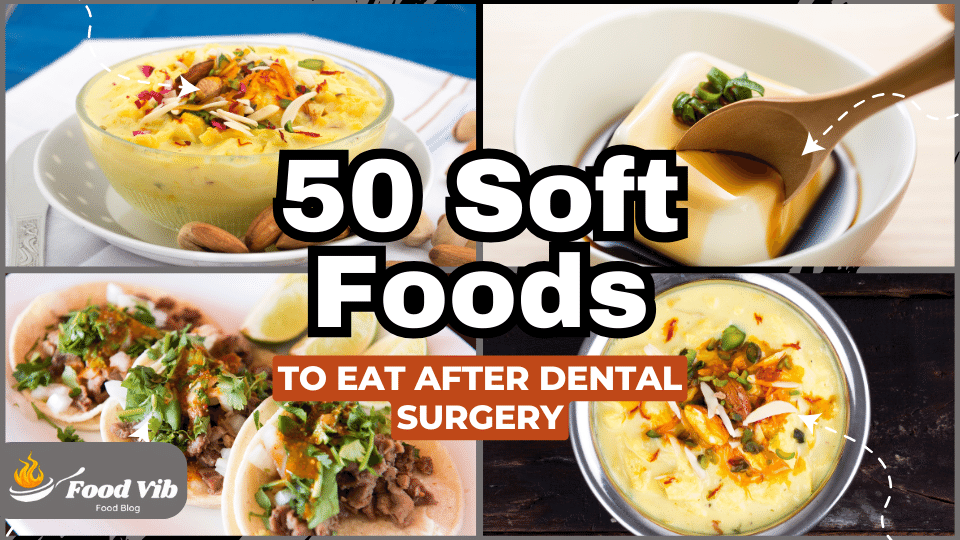

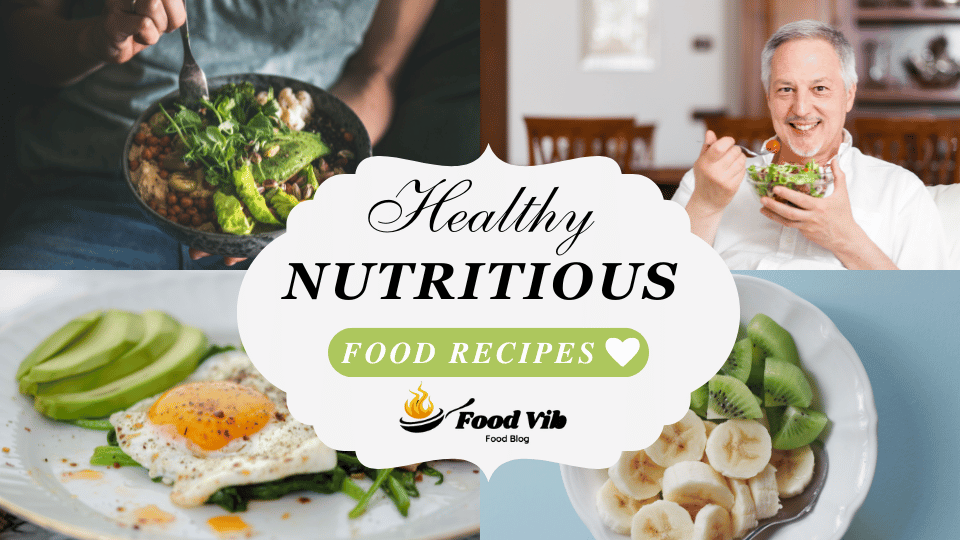
One Comment